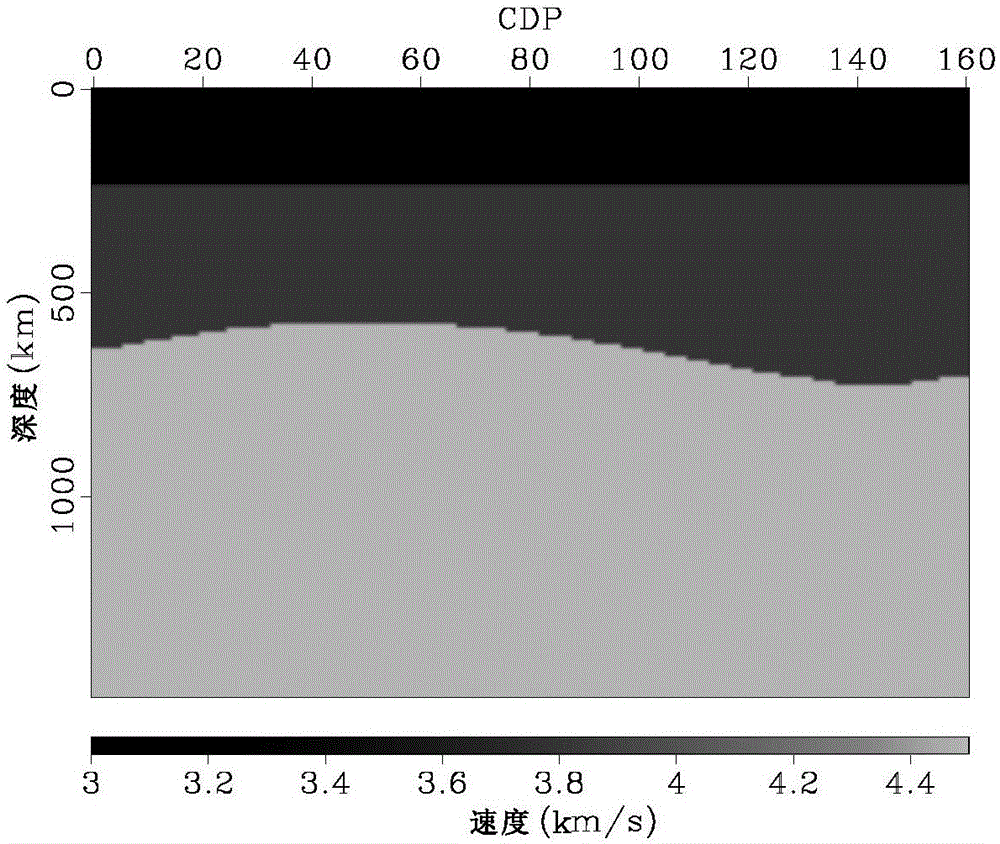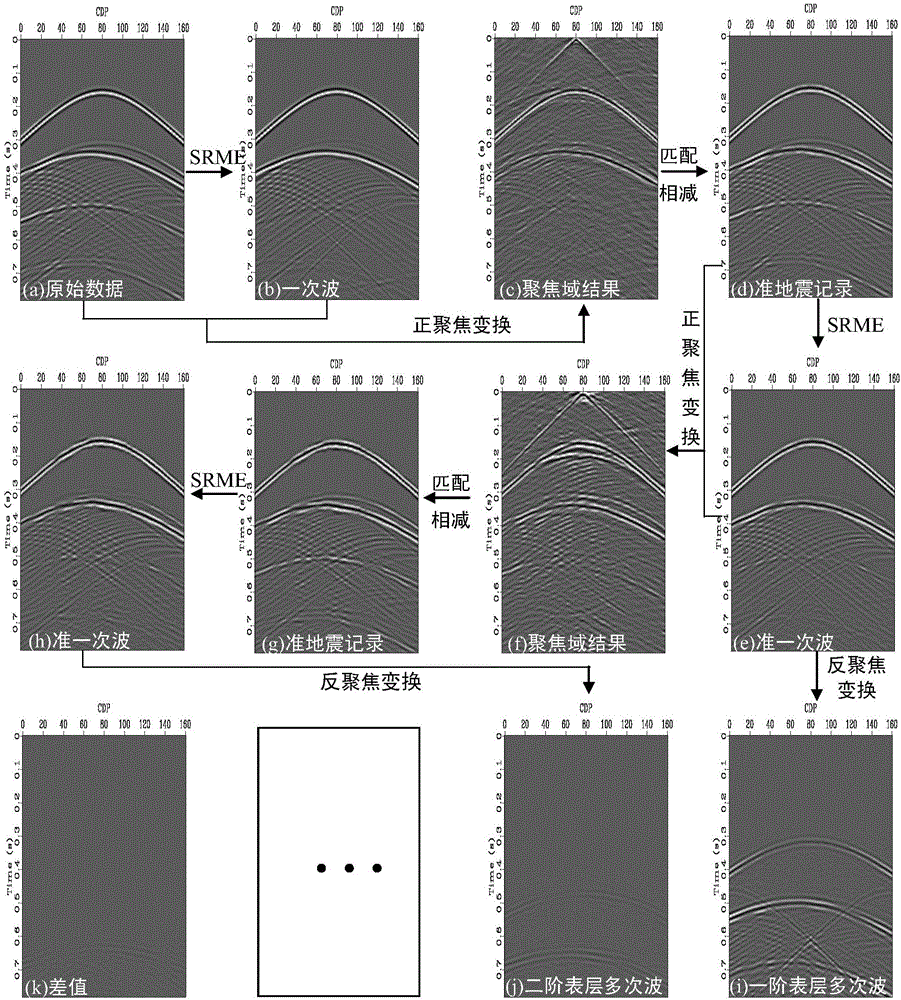Method of separating surface-related multiples of different orders in seismic exploration data
A technology of seismic exploration and multiple waves, which is applied in the field of seismic exploration data processing, can solve the problems that multiple waves cannot be directly separated, and achieve the effects of wide application range, reliable principle, and clear technical process
- Summary
- Abstract
- Description
- Claims
- Application Information
AI Technical Summary
Problems solved by technology
Method used
Image
Examples
Embodiment 1
[0026] The method for separating surface multiple waves of various orders in the seismic exploration data involved in this embodiment includes the following steps:
[0027] S101: Input seismic records, use SRME to extract primary waves:
[0028] For the seismic records containing surface multiples collected by the geophone, the SRME method is used to separate the primary wave from the surface multiples as a whole, and extract the primary wave;
[0029] S102: Positive focus transformation to obtain focus domain results:
[0030] Using the primary wave separated in step S101 to construct a focusing operator, P 0 Represents the primary wave data matrix, and the defocusing operator G uses the primary wave data matrix P 0 Indicates that the positive focusing operator F is expressed as the inverse P of the anti-focusing operator 0 -1 , using the constructed positive focus operator to perform positive focus transformation on the original seismic records to obtain the focus domain...
Embodiment 2
[0047] In this embodiment, the surface multiple wave separation method of each order in the seismic exploration data is used to separate the seismic data containing surface multiple waves in the forward modeling of the three-layer medium model. Since the surface multiple waves in the forward modeling seismic records in this embodiment are First-order and second-order main, the separation process of first-order (N=1) and second-order (N=2) surface multiples will be described in detail below, and the specific steps are as follows:
[0048] (1) The SRME method is used for the forward modeling shot records containing surface multiples to separate the primary waves from the surface multiples as a whole, and to extract the primary waves. The original single-shot seismic records are as follows: image 3 As shown in (a), due to the existence of free surface and strong reflection interface, surface multiples of different orders with strong energy are generated in the shot record, and th...
Embodiment 3
[0065]In this embodiment, the surface multiple wave separation method of each order in the seismic exploration data is used to separate the surface multiple waves of each order from the seismic data containing multiple waves of complex geological bodies. The specific results are as follows:
[0066] Figure 5 It is a schematic diagram of the velocity field of complex geological bodies. In the figure, complex high-steep formations and high-velocity salt bodies can be seen. The formation at 300m-600m is used to simulate the seabed interface. Figure 6 is the result of the separation of surface multiple waves of different orders, Figure 6 (a) is the original single-shot seismic record, composed of Figure 6 (a) It can be seen that the wave field in the seismic record is complex, and the surface multiples of different orders have strong energy and intersect with each other; Figure 6 (b), Figure 6 (c), Figure 6 (d) and Figure 6 (e) are the separated primary waves, first-o...
PUM
 Login to View More
Login to View More Abstract
Description
Claims
Application Information
 Login to View More
Login to View More - R&D
- Intellectual Property
- Life Sciences
- Materials
- Tech Scout
- Unparalleled Data Quality
- Higher Quality Content
- 60% Fewer Hallucinations
Browse by: Latest US Patents, China's latest patents, Technical Efficacy Thesaurus, Application Domain, Technology Topic, Popular Technical Reports.
© 2025 PatSnap. All rights reserved.Legal|Privacy policy|Modern Slavery Act Transparency Statement|Sitemap|About US| Contact US: help@patsnap.com



